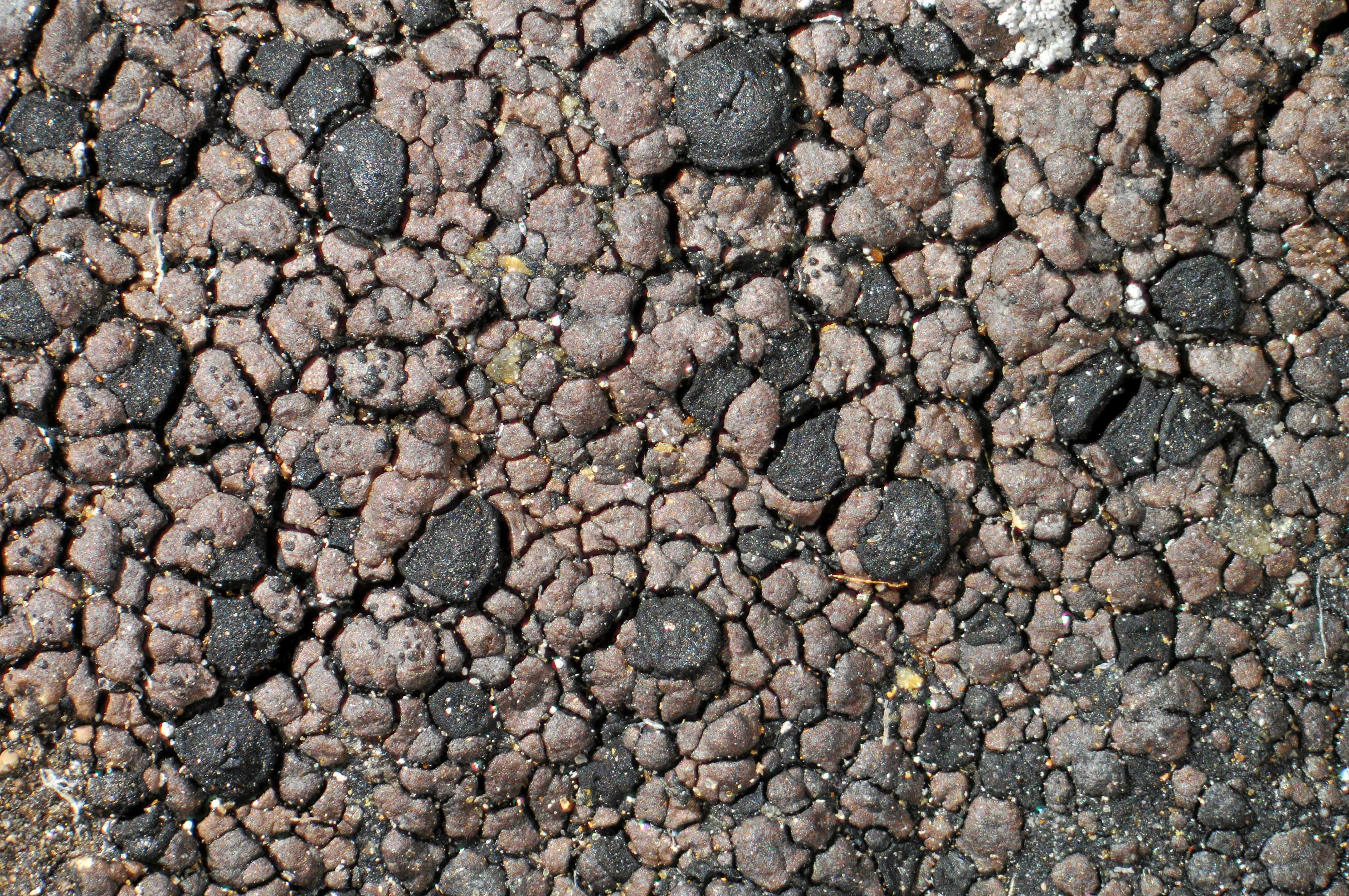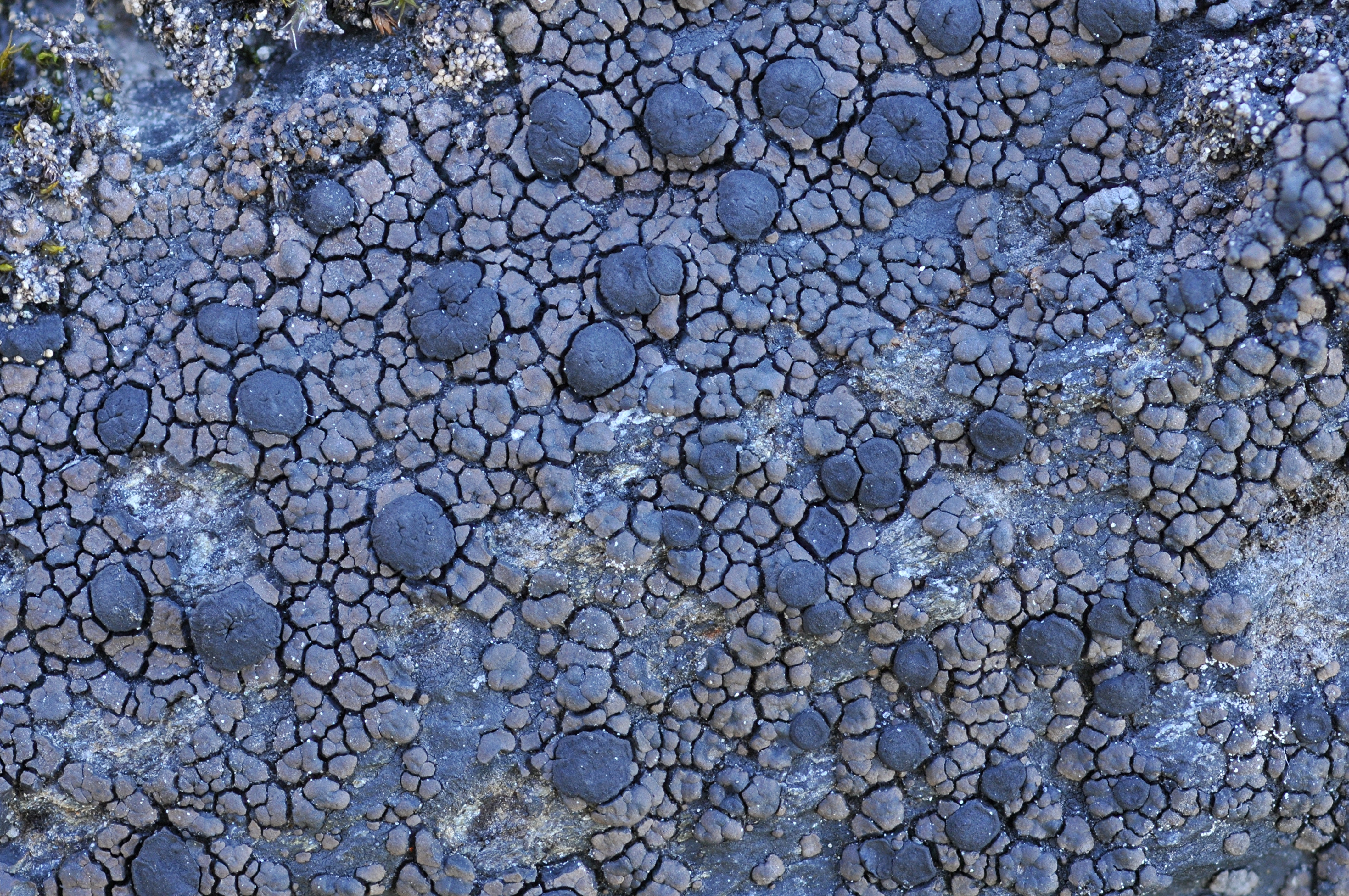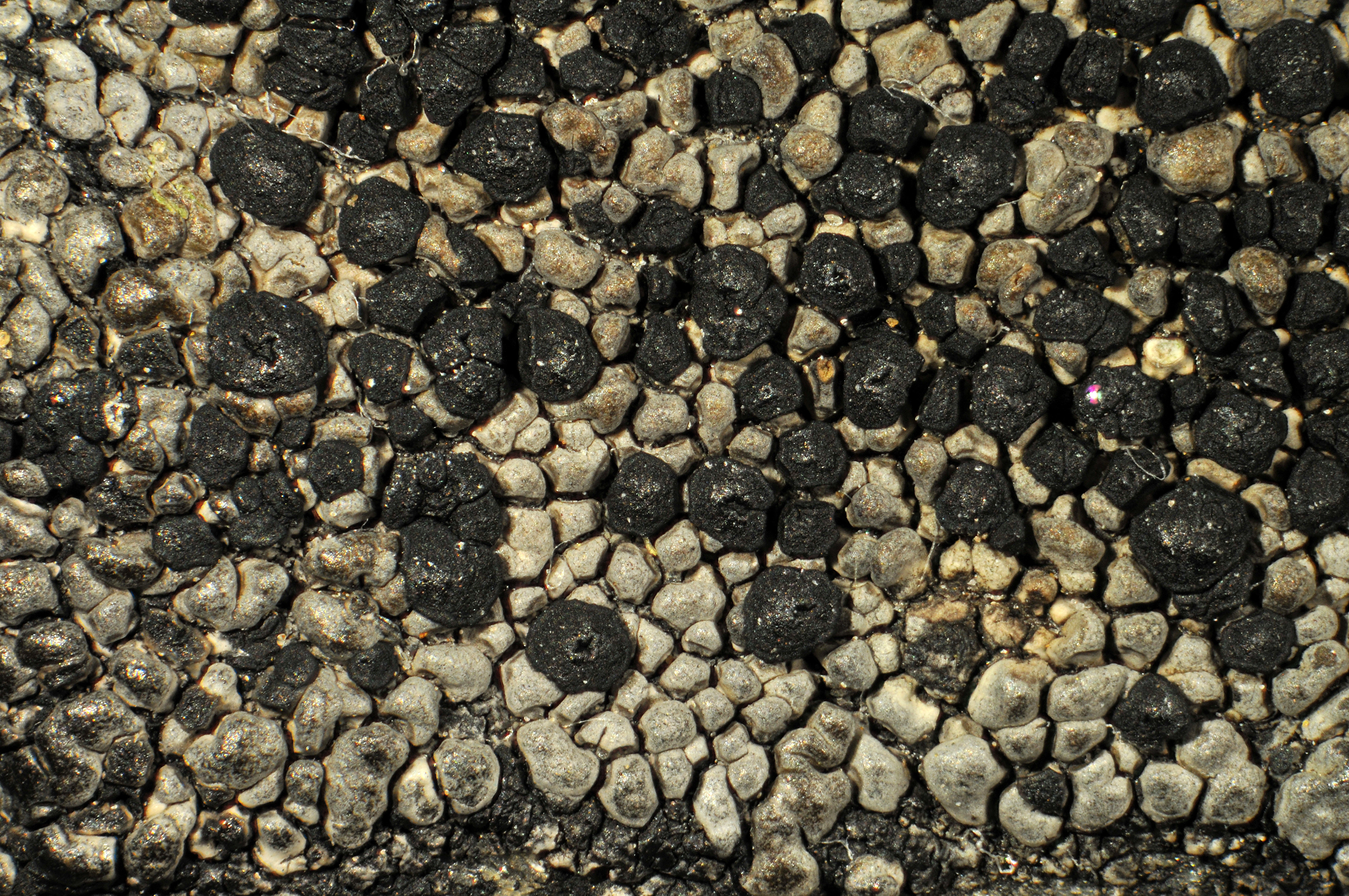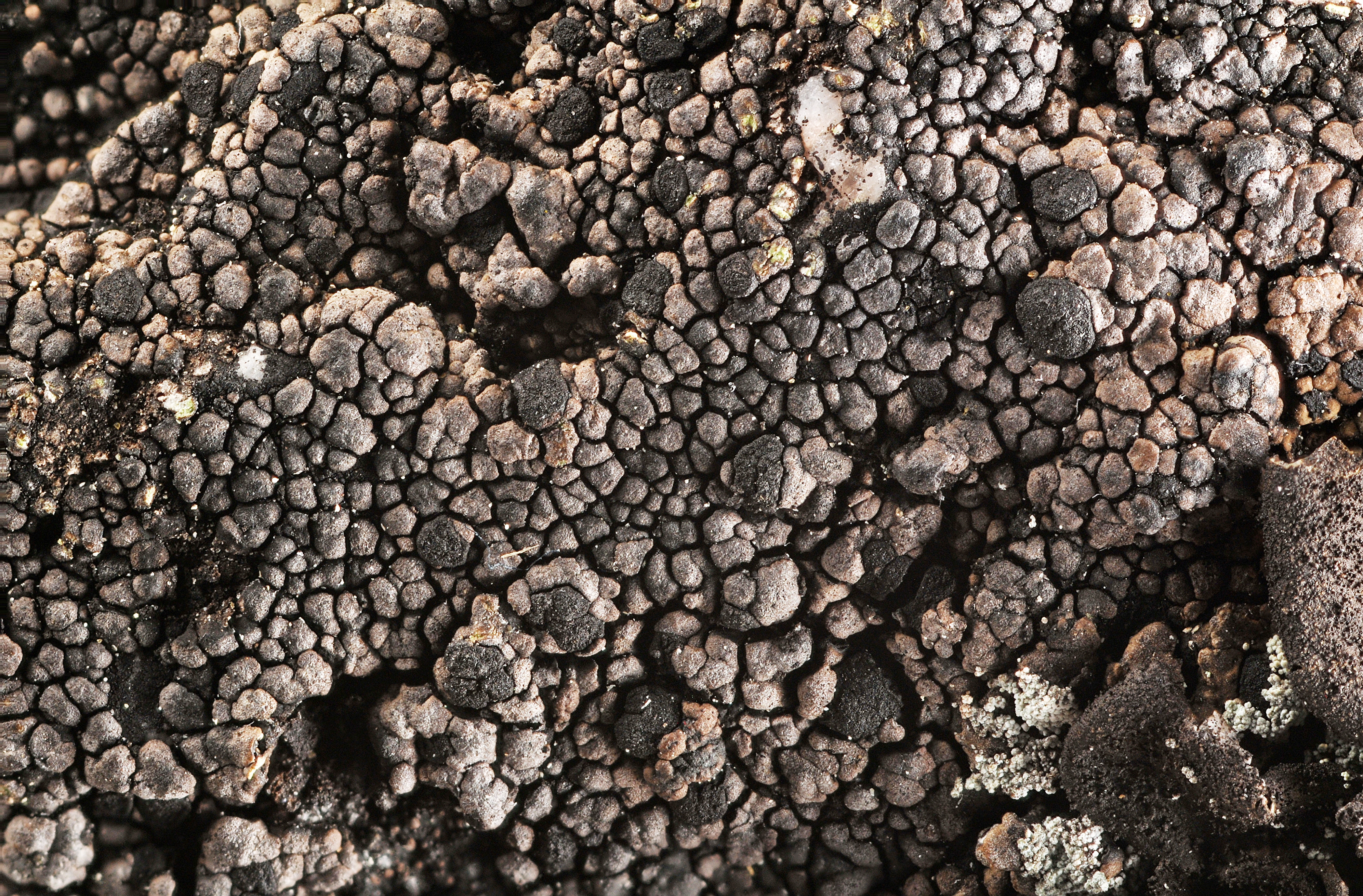Rhizocarpon cinereonigrum
- Innhold
- Morphology
- Chemistry
- Habitat
- Comment
- Look-alikes
Morphology
Thallus areolate, up to 10 cm diam.; hypothallus usually well developed, black; areolae up to 1 mm diam., greyish brown to dark brown, dull, usually more or less contiguous, orbicular or angular to slightly crenulate, plane to moderately convex; marg KI–. – Apothecia up to 1 mm diam., black, epruinose, orbicular, remaining more or less plane and marginate; excipulum blackish brown, K+ red or K–; hypothecium brown, K–; hymenium colourless; epihymenium dark brown, K+ red; no crystals or granules in the apothecia; ascospores 8 per ascus, 1-septate, soon becoming dark brown, 26–36 × 13–16 µm. – Conidiomata not seen.
Chemistry
Stictic acid; spot tests: medulla PD+ orange, K+ yellow, C–.
Habitat
On siliceous rock in the lowlands. Common.
Comment
The species belongs in the R. badioatrum-compex, and resembles morphologically and anatomically most closely R. badioatrum. Within the complex, it is recognized mainly by the presence of stictic acid. There are two other species with 1-septate, green to brown ascospores and stictic acid in the thallus: R. copelandii and R. jemtlandicum; both differs in having a greenish brown, K–, epihymenium containing crystals refracting polarized light.




